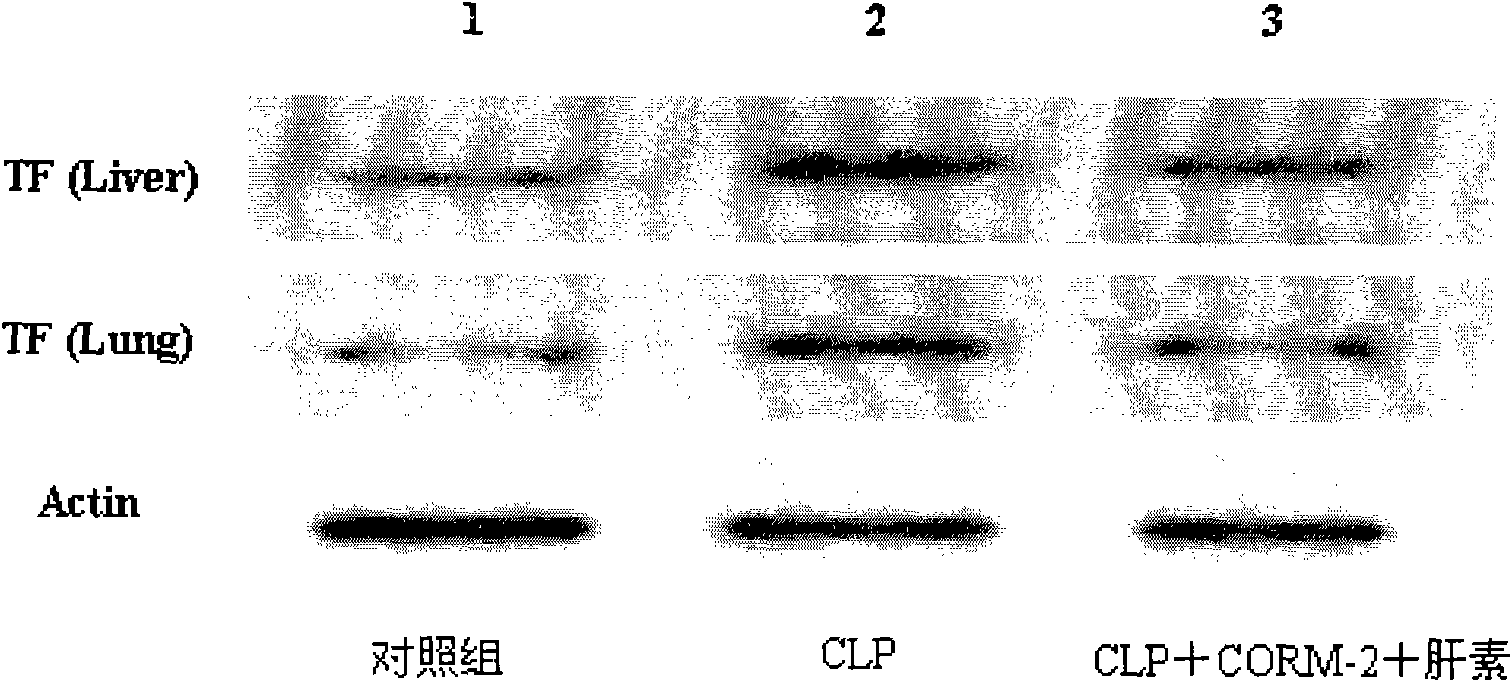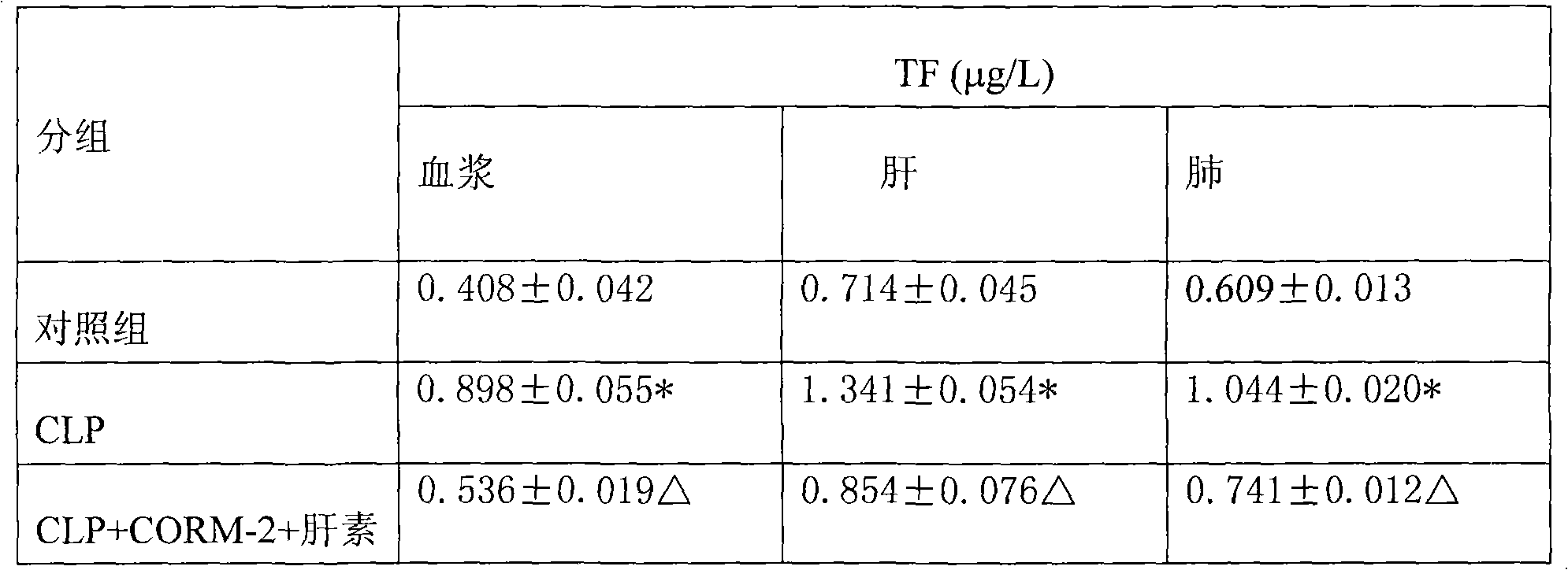Application of carbon monoxide-releasing molecules and heparin in preparing medicament for treating sepsis
A technology for carbon monoxide and sepsis, applied in the direction of drug combinations, medical preparations containing active ingredients, pharmaceutical formulas, etc., can solve problems such as blood coagulation damage, achieve reduced dosage, easy and correct concentration control, and meet clinical applications Effect
- Summary
- Abstract
- Description
- Claims
- Application Information
AI Technical Summary
Problems solved by technology
Method used
Image
Examples
Embodiment 1
[0021] Preparation of the drug:
[0022] Mix 20.5 mg of carbon monoxide releasing molecules with 1 ml of DMSO to obtain a preparation A with a concentration of 40 mM, and use it at a dose of 8 mg / kg body weight; mix and dilute 20,000 IU / 2 ml of heparin with normal saline 10 times to obtain 1,000 IU / L Heparin solution preparation B is used at a dose of 100 IU / kg body weight.
Embodiment 2
[0024] Effects of CORM-2+ultramicrodose heparin on WBC, PLT count, plasminogen (PLG) and antithrombin III (AT-III) activity in septic mice.
[0025] experiment method:
[0026] (1) Animal and CLP sepsis model
[0027] Male C57BL / 6 mice, 6-8 weeks old, weighing 18±2 grams, were raised in a general laboratory (commercial dry block feed, free access to water). The experimental animals were divided into three groups according to the random number table method: Sham group (n=9), CLP group (n=9) and CLP+CORM-2+heparin group (n=9).
[0028] Under isoflurane inhalation anesthesia, the mice in the CLP group were subjected to cecal ligation and perforation, and 1.5ml of normal saline was injected intraperitoneally after injury to resist shock; the mice in the CLP+CORM-2+heparin group were injected with CORM-2 (8mg / kg), and at the same time intraperitoneally inject heparin 100U / kg body weight.
[0029]Wherein: the medicine used in the Sham group is normal saline, the medicine used in...
Embodiment 3
[0050] Effects of CORM-2+ultramicrodose heparin on coagulation system and platelet aggregation in septic mice
[0051] experiment method:
[0052] (1) Animal and CLP sepsis model
[0053] Male C57BL / 6 mice, 6-8 weeks old, weighing 18±2 grams, were raised in a general laboratory (commercial dry block feed, free access to water). The experimental animals were divided into three groups according to the random number table method: Sham group (n=9), CLP group (n=9) and CLP+CORM-2+heparin group (n=9). Under isoflurane inhalation anesthesia, the mice in the CLP group were subjected to cecal ligation and perforation, and 1.5ml of normal saline was injected intraperitoneally after injury to resist shock; the mice in the CLP+CORM-2+heparin group were injected with CORM-2 (8mg / kg), and at the same time intraperitoneally inject heparin 100U / kg body weight. All animals were sacrificed with isoflurane inhalation 24 hours after injury and collected specimens.
[0054] (2) Detection indi...
PUM
 Login to View More
Login to View More Abstract
Description
Claims
Application Information
 Login to View More
Login to View More - R&D
- Intellectual Property
- Life Sciences
- Materials
- Tech Scout
- Unparalleled Data Quality
- Higher Quality Content
- 60% Fewer Hallucinations
Browse by: Latest US Patents, China's latest patents, Technical Efficacy Thesaurus, Application Domain, Technology Topic, Popular Technical Reports.
© 2025 PatSnap. All rights reserved.Legal|Privacy policy|Modern Slavery Act Transparency Statement|Sitemap|About US| Contact US: help@patsnap.com



